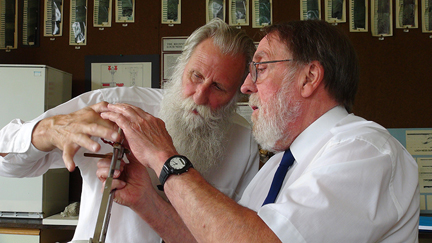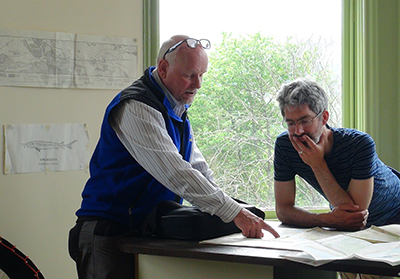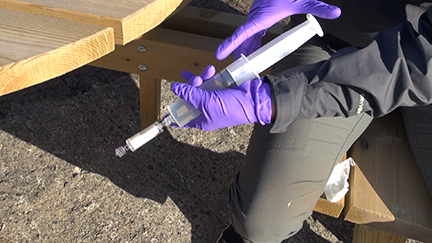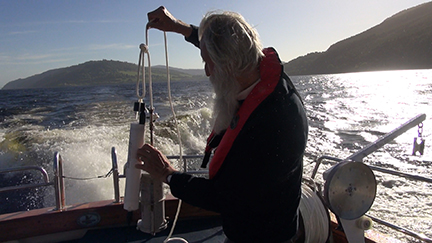Week commencing Monday 4th June 2018
Today sampling the water from the shoreline commenced. Some sites were easy to access by road but others needed a shallow draught boat to enable scientists to sample where the shore is too steep or a long walk in.The UHI provided their new Pioneer craft with Prof. Eric Verspoor at the helm and enabling samples to be ferried quickly back to the harbour for processing.
Processing the water entails extracting a full syringe of the sampled water and pushing it through a special fine pore filter. As more of the sample is pushed through the filter it becomes harder to push! This process concentrates the sample and indeed it is a very concentrated task! However the sun was ... but the midges weren't.
In the evening as the shore sampling drew to a close for the day, we boarded Deepscan to test the Friedinger water sampler. John Minshull and Adrian Shine had modified the release mechanism on the Friedinger earlier in the day. After several tests up to 100m we were all satisfied with the deployment routine and that the equipment was firing correctly.The weather held but there was a cool breeze so that repeatedly handling 100m of cold wet rope became just that bit colder.
Sampling at depth commences tomorrow.
The team heads north in the evening sun
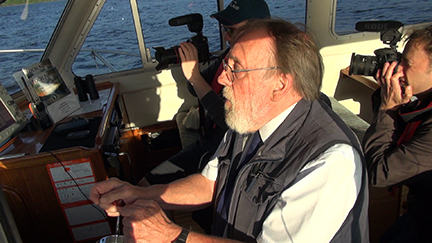
Skipper John Minshull holds the boat head to wind while the sampler is deployed off the bows. The film crew are getting filmed too ... sorry !
TOMORROW NIGHT WE WILL DEEP WATER SAMPLE TO 200M.
___________________________________________
Out again at 6pm to go to the north basin to sample at two stations with 3 depths sampled with replicates.
Aboard Deepscan are Prof. Neil Gemmell, Adrian Shine, Cristina di Muri, Gert-Jan Jeunen, John Minshull, Maralyn Shine, Zander and Kieran.
It is yet again a beautiful night snd we very briefly skirt Urquhart Castle for a photo call before the serious work begins.
Now into seriously deep water we sample firstly at 200m, deeper than the height of the London Telecom tower. Motoring further south for the second station sampling, we had local sun-down and suddenley we are all in fleeces and hats and the loch looks lumpy and cold. When the boat heading falls off the wind, she rolls and we use one hand for the boat and keep one for ourselves! However the sampling continues and the processing is relentless.
At each station, firstly a profiler is lowered and its temperature data uploaded to a laptop. Having read the data and being happy to proceed, the Freidinger sampler is scrupulously cleaned and lowered to the correct depth by a measured line from the ships bows. At the correct depth the messenger weight is put onto the line and it begins its descent to the sampler triggering mechanism which closes and traps the water.
The retrieval is from aft were though the electric hauler helps pull the sample up from the depths, that cold, wet rope must still be flaked by hand ready for the next drop.
We have along with us, Kieran and Zander to film and photograph the sampling and Maralyn Shine is filming for the Loch Ness Project and the Loch Ness Centre.
We finally head for home and arrive at the harbour at 10 pm and make our last visit to the Loch Ness Centre's lab. Local sunset turns the loch dark. Break out the woolly hats.The final samples are extracted efficientlyand fast, it was not plain sailing by 9.30pm.
The water sample is immediately decanted into a sterile bottle and systematically pushed through filters, a buffer presevative is added, the tube labelled and it's ready to head off for lab processing.
It is meticulous and painstaking work especially when the sun has gone down, fingers are numb with cold and it's been a long day. |

